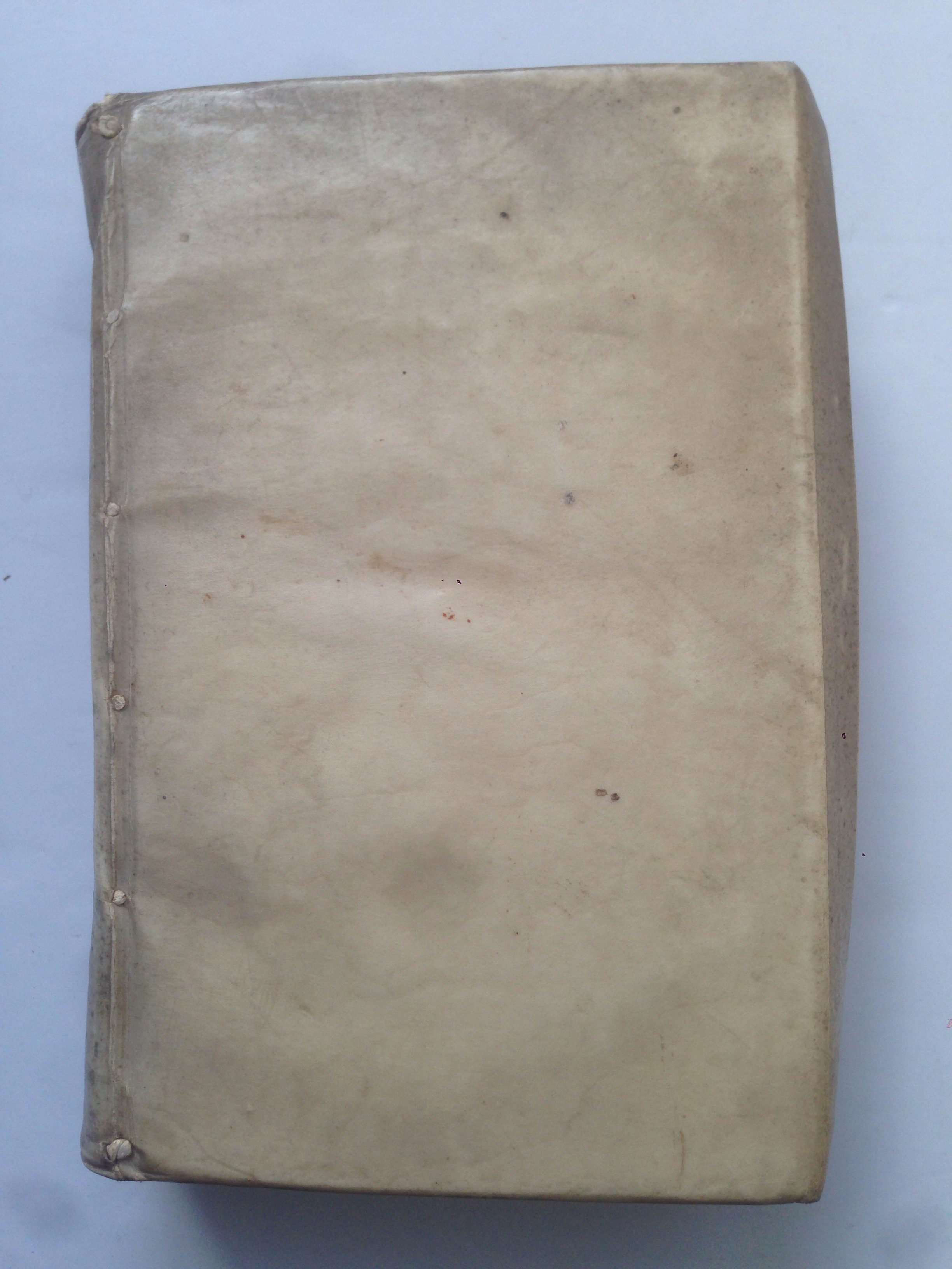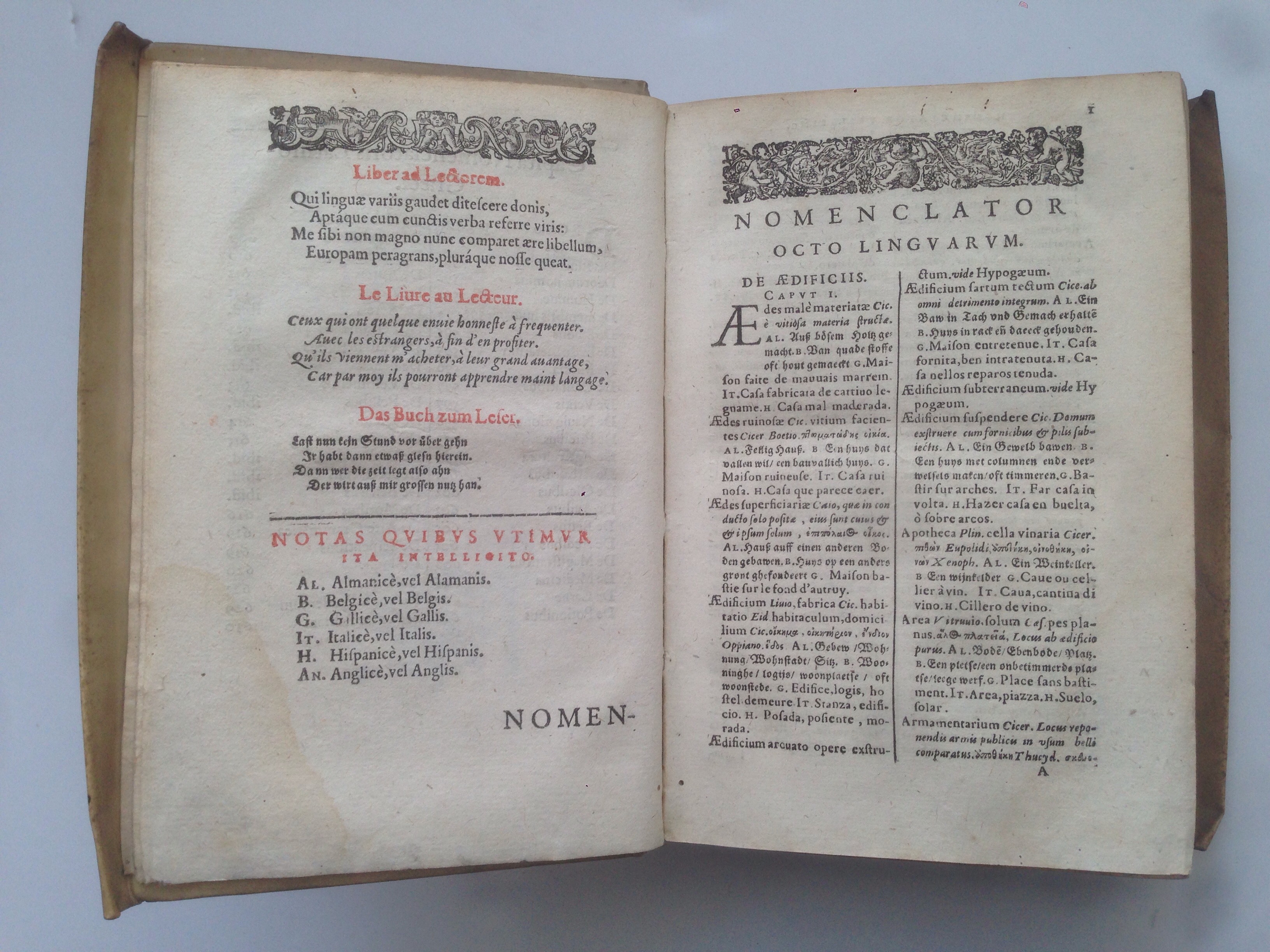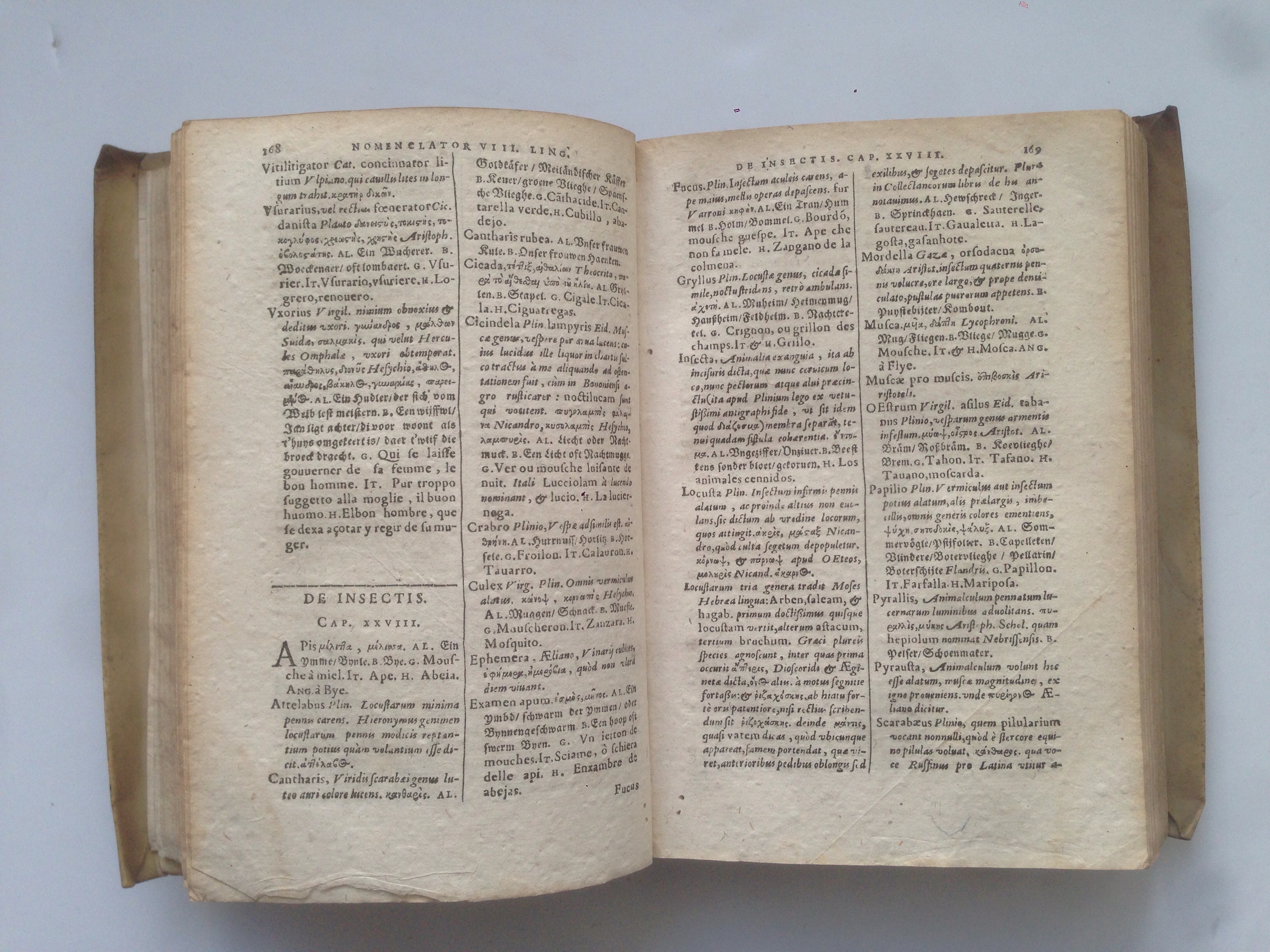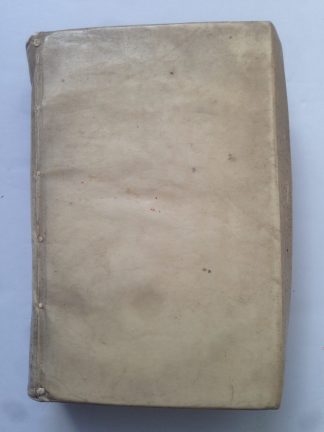JUNIUS, Hadrianus
Nomenclator octilinguis omnium rerum propria nomina continens
[Geneva], Excudebat Iacobus Stœr, 1602£1,950.00
8vo. pp. [xvi], 634, [lxxiv]. [par.] , A-2X , 2Y². Double column. Roman letter, some Greek, Gothic and Italic. Title in red and black, small woodcut printer’s device, grotesque woodcut initials, head and tail-pieces. Light age yellowing, very minor light water-stain in lower outer corner in places. A very good, clean copy in contemporary vellum over boards, yapp edges.
Excellent edition of this important polyglot dictionary, finely printed in Geneva by Jacob Stoer, and edited by Hermann Germberg. The arrangement is alphabetical by topic, then alphabetically within each topic; polyglot entires are arranged under Latin terms, with preliminaries in Latin. Hadrianus Junius (1511–1575), also known as Adriaen de Jonghe, was a Dutch physician, classical scholar, translator, lexicographer, antiquarian, historiographer, emblematist, school rector, and Latin poet. He attended both the Crown Prince of Denmark and the Duke of Norfolk, and was singled out by Lipsius as the most learned Dutchman after Erasmus. This polyglot dictionary was Junius’ most successful and influential book, often re-edited with many further adaptions. It is thematic, and especially strong on terms used in medicine, zoology, botany, etc., but also music, architecture, warfare, gastronomy, dress, weights and measures and the book world. “In early modern Europe, two main types of onomasiological dictionaries can be distinguished. The first type primarily has practical and didactic objectives. In spite of Junius’ didactic claims presented in his preface, the Nomenclator belongs to a second group of topical dictionaries, which are less practical and more scholarly orientated. In comparison to the first type, these dictionaries, which often included old Greek, tend to be more comprehensive in volume and more methodical in classification and systematisation. Many dictionaries of the second type are called Nomenclator, and Junius’ Dictionary probably ranks as it’s best known exponent. .. In addition to the Latin headwords, Greek, German, Dutch, French, Italian, Spanish, and English translations are offered. … Of course, Junius made use of several sources (which are listed in the preface), but his dictionary is by no means derived from an existing one. As in many other early modern topical dictionaries, the overwhelming majority of concepts included as lemmas are concrete objects (resulting in a considerable number of substantive nouns). It is interesting to note that the number of technical concepts (especially in connection with diseases and illnesses) is considerably larger than the amount of ‘normal’ vocabulary that is included. As Gabriele Stein suggested, this is most likely the result of Junius’ training as a physician. ..In only a small number of lemmas do the eight languages occur together. English is included in no more than about 250 entries. As knowledge of English on the European continent was very limited in the sixteenth century, this is perhaps not surprising. .. Apart from the headworks and the translations, Junius enriched many lemmas with supplementary information, moving in the direction of encyclopaedic dictionary. In addition .. some entries feature an etymological explanation” Dirk van Miert ‘The Kaleidoscopic Scholarship of Hadrianus Junius (1511-1575).’
ESTC S126703.In stock













